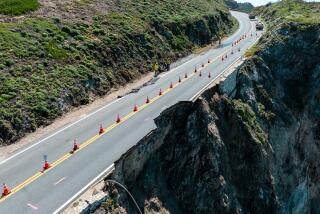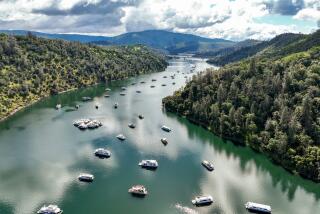Officials plan to release water on damaged Oroville Dam spillway ahead of more wet weather
As Northern California braces for more wet weather, state officials plan to resume releasing water down a damaged spillway at Oroville Dam.
The California Department of Water Resources said Thursday that dam operators will reopen the damaged spillway for up to 14 days beginning Friday as state officials finish repair plans.
But as Northern California continues to be hit by more storms and in anticipation of runoff from the snowmelt, DWR Director Bill Croyle said that repairs probably won’t start until May or early June.
“It’s a lot easier to take two to three years to do this, but I don’t have two to three years, I have some months,” Croyle said. “I need to make sure we put a spillway back in place.”
The wet weather is forecast to hit the Oroville area starting Sunday morning and last until late next week, according to the National Weather Service.
A special weather statement by the weather service said that the agency was tracking a “strong thunderstorm over Oroville,” with the possibility of hail and winds up to 30 mph.
In anticipation of this storm and potentially others, the DWR is trying to lower the lake level as much as possible behind the dam before closing the spillway for good to start repairs.
Multiple agencies are involved in reconstruction plans, which also need to be approved by federal regulators. As experts continue to analyze the damaged site, the new information changes reconstruction plans.
“Each week we address a next set of technical issues to review,” Croyle said.
In February, the state narrowly avoided what would have been a catastrophic disaster when engineers discovered a huge crater on the reservoir’s main spillway, leading authorities to switch to an emergency spillway to reduce the water level. Then that spillway nearly failed, prompting concerns that a concrete wall would collapse, sending a wall of water out of the lake.
More than 100,000 people were evacuated from the potential flood path. Engineers were eventually able to reduce lake levels by increasing the amount of water flowing down the already damaged main spillway.
Follow me on Twitter @melissaetehad
More to Read
Sign up for Essential California
The most important California stories and recommendations in your inbox every morning.
You may occasionally receive promotional content from the Los Angeles Times.










